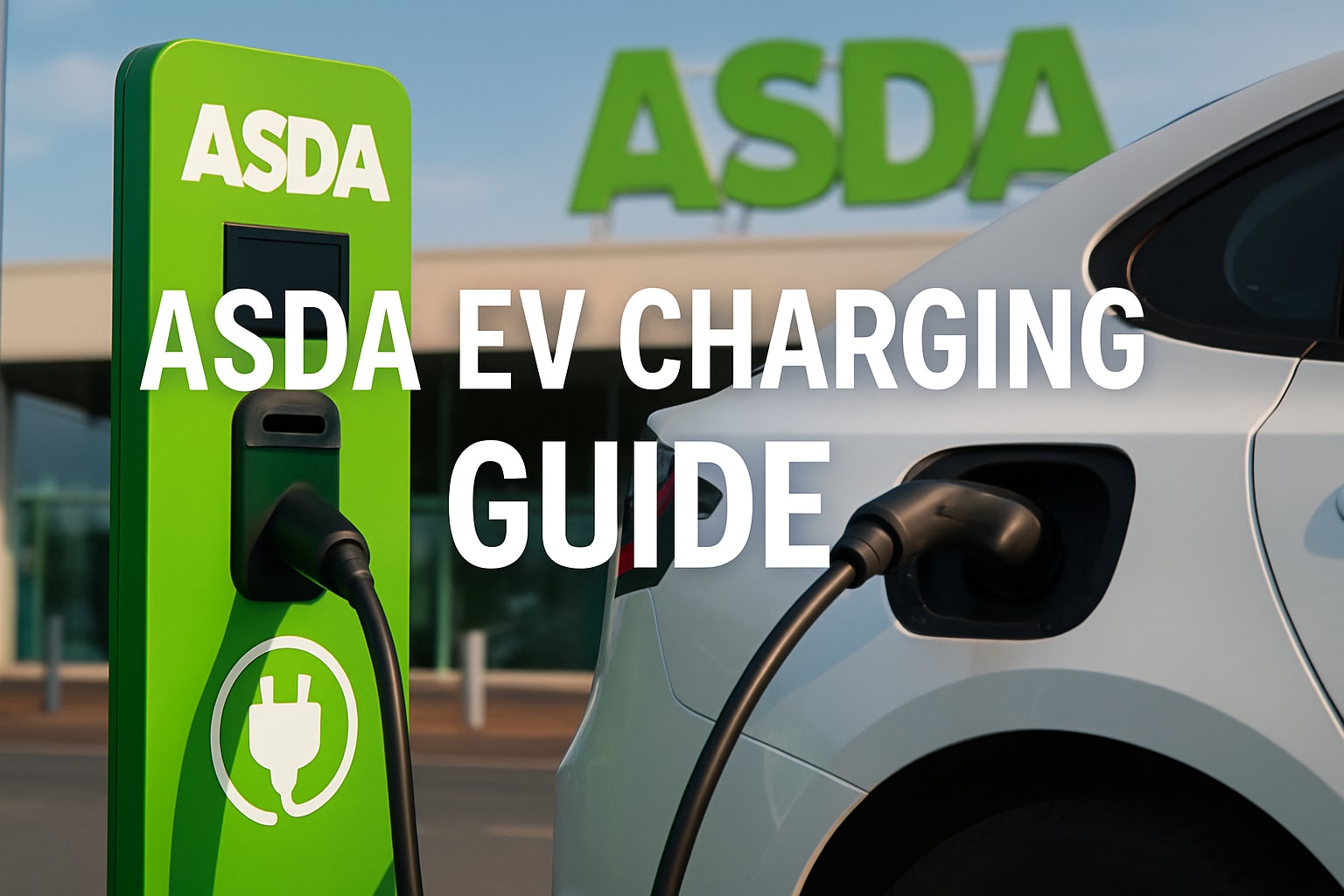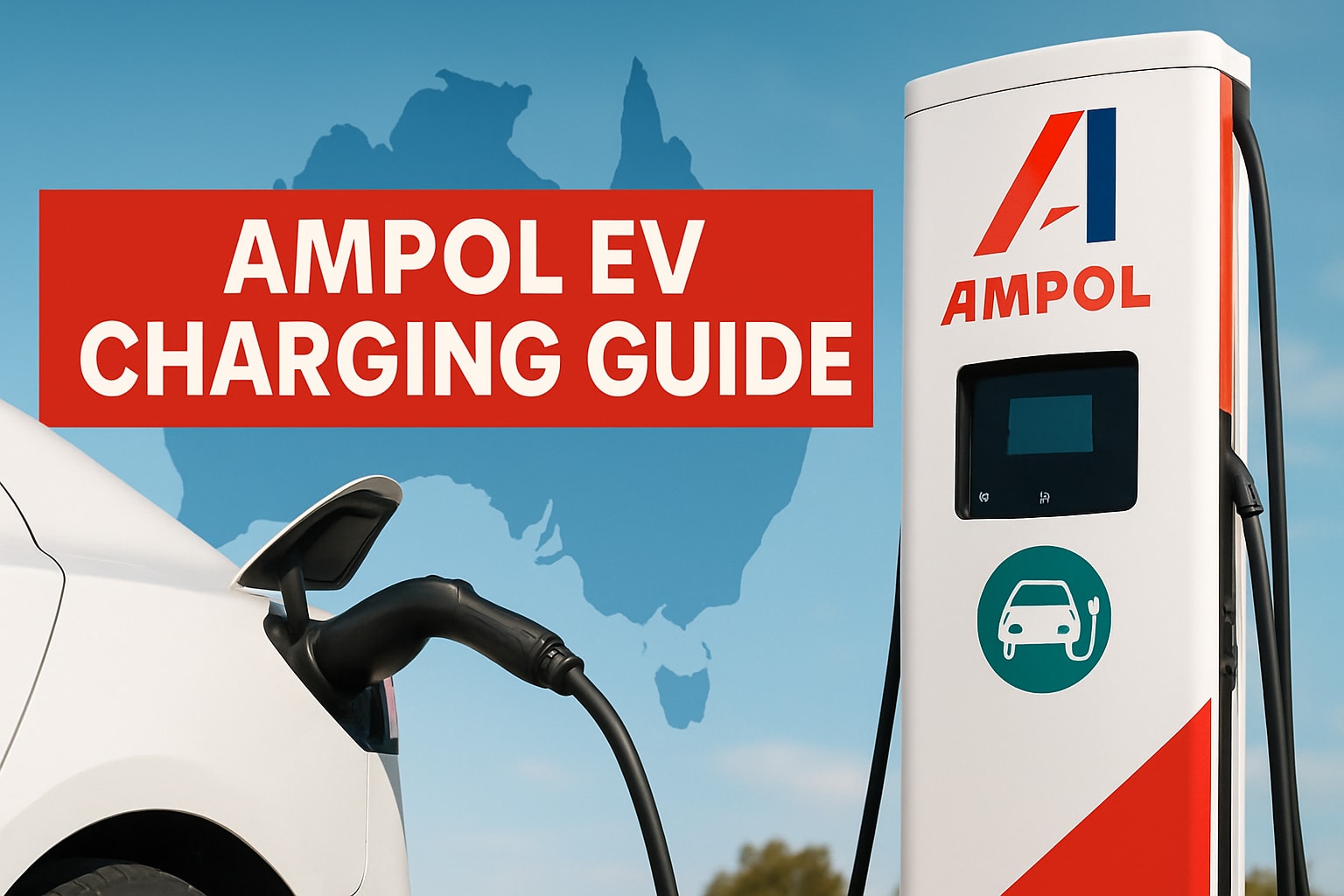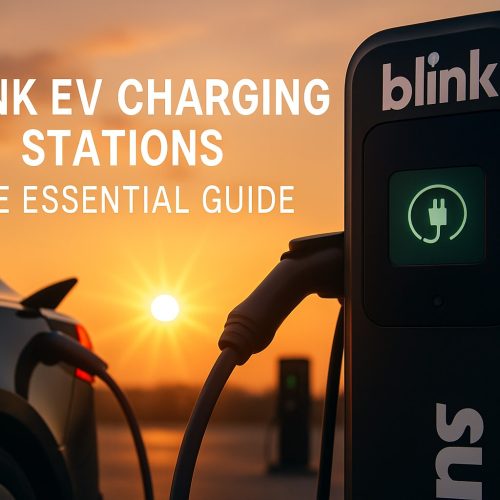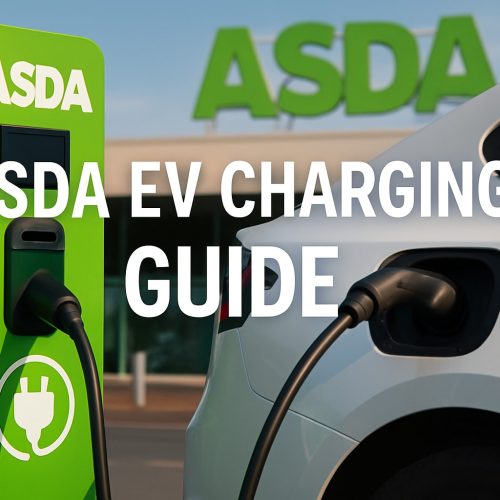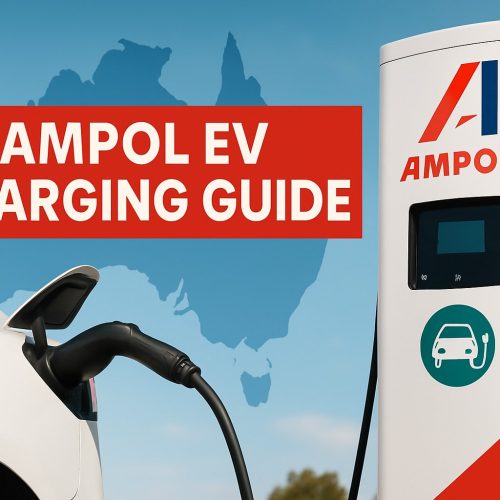OCPP API integration is a critical aspect of building better customer experiences in the field of electric vehicle (EV) charging. The Open Charge Point Protocol (OCPP) is an open-source communication protocol that allows for interoperability between EV charging stations and apps or control systems. This guide will provide a comprehensive overview of OCPP API integration, including its functionality, benefits, challenges, and how it compares to other EV APIs.
Key Takeaways:
- OCPP API integration enhances EV charging experiences
- OCPP enables interoperability between charging stations and apps or control systems
- OCPP offers real-time data exchange, scalability, and standardized communication
- Challenges of OCPP include changing owners of chargeboxes and different versions
- OCPP 2.0 introduces new features and improvements
What is OCPP?
The Open Charge Point Protocol (OCPP) is a communication protocol specifically designed for EV charging stations, enabling seamless interoperability between charging stations and apps or control systems. OCPP serves as a standardized framework that facilitates communication and data exchange between diverse charging infrastructure provided by different manufacturers.
Developed by the Open Charge Alliance in 2009, OCPP has gained significant traction in the EV industry, promoting compatibility and standardization in the management of charging stations. By adhering to the OCPP standards, Product Managers can ensure that their apps or control systems can interact with charging stations from multiple vendors, ultimately offering consistent and reliable charging experiences to end-users.
How Does OCPP Work?
OCPP operates on a client-server model, with the charging stations acting as clients and the central management system acting as the server. This model allows for real-time data exchange, status monitoring, and control of charging sessions across different charging stations from various vendors.
The standardized communication enabled by OCPP enables seamless integration and management of charging stations within an EV charging app or control system. It also allows for bi-directional communication, facilitating remote management of charging stations and enabling optimized charging experiences for end-users.
Benefits of Using OCPP
OCPP offers numerous benefits for Product Managers building EV charging experiences. One of the most significant advantages is the interoperability it provides. By integrating charging infrastructure from multiple vendors into a single app or control system, OCPP eliminates vendor lock-in and enables scalable solutions.
In addition, OCPP enables real-time data exchange, providing valuable insights and facilitating the building of better charging experiences. The standardization and compatibility promoted by OCPP enhance the overall efficiency and effectiveness of EV charging systems, ensuring a seamless and reliable user experience.
How does OCPP work?
OCPP operates on a client-server model, where the charging stations act as clients and the central management system acts as the server. This architecture allows for real-time data exchange, status monitoring, and control of charging sessions, ensuring efficient and seamless management of EV charging. The client-server model of OCPP provides a standardized communication protocol that enables interoperability between various charging stations and central management systems.
With OCPP, charging stations can send real-time updates on their status, including availability, power levels, and charging session details, to the central management system. Conversely, the central management system can send commands to the charging stations to start or stop charging sessions, adjust power levels, or retrieve historical charging data. This bi-directional communication enables efficient monitoring and control of the charging infrastructure, ensuring optimal charging experiences for EV users.
Furthermore, OCPP supports data exchange using industry-standard protocols such as websockets and JSON, allowing for seamless integration with other systems and applications. This enables charging station operators to integrate OCPP with their existing software platforms or develop custom applications to enhance functionality and provide value-added services to their customers.
Real-time Data Exchange
One of the key features of OCPP is its ability to facilitate real-time data exchange between charging stations and the central management system. This enables operators to have up-to-date information on the status and performance of their charging infrastructure. They can monitor the availability of charging stations, identify any faults or issues, and take proactive measures to ensure optimal operations.
Status Monitoring and Control
OCPP allows for comprehensive status monitoring and control of charging sessions. Operators can remotely monitor the status of each charging station, including the availability, connectivity, and power levels. They can also control the charging sessions, such as starting or stopping charging, adjusting power levels, and initiating payment transactions. This level of control ensures efficient utilization of the charging infrastructure and enhances the overall user experience.
| Key Features of OCPP | Benefits |
|---|---|
| Standardized Communication Protocol | Enables interoperability between charging stations and central management systems from different vendors. |
| Real-time Data Exchange | Allows for up-to-date status monitoring and performance analysis of the charging infrastructure. |
| Status Monitoring and Control | Enables remote control and management of charging sessions for optimal utilization of the charging infrastructure. |
| Seamless Integration | Supports integration with existing software platforms and enables the development of custom applications. |
Benefits of using OCPP
Using OCPP for EV charging integration offers a range of benefits that enhance the overall EV charging experience. These benefits include:
- Interoperability: OCPP allows for the integration of charging infrastructure from multiple vendors into a single app or control system. This eliminates vendor lock-in and enables the creation of scalable solutions.
- Scalable Solutions: OCPP enables the seamless integration of a wide range of charging stations, regardless of manufacturer, providing flexibility for Product Managers to expand and adapt their charging infrastructure as needed.
- Real-time Data Exchange: With OCPP, charging stations can exchange real-time data with apps or control systems, providing valuable insights into charging sessions, energy consumption, and status updates. This data exchange empowers Product Managers to optimize charging experiences and make data-driven decisions.
- Standardization: OCPP promotes standardization and compatibility across charging infrastructure, ensuring consistent communication protocols and a streamlined integration process. This standardization enhances the efficiency and effectiveness of EV charging systems.
- Greater Efficiency: By using OCPP, Product Managers can optimize charging experiences, minimize downtime, and maximize the utilization of charging stations. This leads to improved efficiency and a more seamless charging process for EV owners.
Overall, OCPP provides a framework for building better EV charging experiences by offering interoperability, scalability, real-time data exchange, and standardized communication. These benefits empower Product Managers to create efficient, user-friendly, and future-proof charging solutions for EV owners, enhancing overall customer satisfaction and contributing to the growth of the EV industry.
Table 1: Summary of Benefits of Using OCPP
| Benefit | Description |
|---|---|
| Interoperability | Allows integration of charging infrastructure from multiple vendors |
| Scalable Solutions | Enables flexible and expandable charging infrastructure |
| Real-time Data Exchange | Facilitates exchange of charging session data and status updates |
| Standardization | Promotes consistent communication protocols and compatibility |
| Greater Efficiency | Optimizes charging experiences and utilization of charging stations |
“OCPP provides a framework for building better EV charging experiences, enabling interoperability, scalability, real-time data exchange, and standardized communication.”
Conclusion
OCPP API integration offers numerous benefits that enhance EV charging experiences, including interoperability, scalability, real-time data exchange, standardized communication, and greater efficiency. By leveraging the power of OCPP, Product Managers can create seamless and user-friendly charging solutions, contributing to the growth and development of the EV industry. With advancements like OCPP 2.0 and the simplicity of OCPP 0, the protocol continues to evolve, providing more options and opportunities for integrating charging infrastructure and delivering exceptional charging experiences to EV owners.
Section 5: Challenges of using OCPP
While OCPP offers numerous advantages for EV charging integration, it is important to be aware of the challenges that may arise when implementing this protocol. These challenges can impact interoperability, the ability to change owners of chargeboxes, and the varying versions of OCPP.
Interoperability
One challenge that may arise with OCPP is ensuring interoperability between charging stations and apps or control systems. Integrating charging infrastructure from multiple vendors into a unified app can be complex, requiring careful coordination and compatibility testing.
Changing Owners of Chargeboxes
Another challenge lies in the process of changing ownership of chargeboxes and linking them to different systems. This can potentially limit the interoperability of chargeboxes with other distributed energy resources, making it challenging to seamlessly integrate them into different charging networks.
Different Versions of OCPP
OCPP has multiple versions, and each version may have its own compatibility considerations. Product Managers may need to ensure that their charging infrastructure is compatible with the specific version of OCPP they are using, and understand any differences or updates in functionality between versions.
| Challenges | Description |
|---|---|
| Interoperability | Ensuring compatibility and seamless integration between charging infrastructure from multiple vendors. |
| Changing Owners of Chargeboxes | The complexity of transferring ownership of chargeboxes and linking them to different systems. |
| Different Versions of OCPP | The need to understand and accommodate different versions of OCPP to ensure compatibility and functionality. |
Despite these challenges, OCPP remains a popular choice in the EV industry due to its interoperability, scalability, and standardization benefits. Product Managers should carefully consider these challenges and work closely with their development teams and charging infrastructure providers to overcome them and unlock the full potential of OCPP integration.
OCPP vs EV API: A Comparison of Charging Station Integration
When it comes to integrating charging stations into apps or control systems, two options have gained prominence: OCPP and EV API. Both OCPP (Open Charge Point Protocol) and EV API offer interoperability and data exchange capabilities, but they differ in their approach and functionality. Let’s take a closer look at the key differences between OCPP and EV API and explore their impact on charging station integration.
OCPP: Interoperability and Compatibility
OCPP is a widely adopted communication protocol that ensures seamless integration of charging infrastructure from multiple vendors. It provides a standardized approach, allowing for interoperability and compatibility across different charging station manufacturers. This makes OCPP a popular choice, particularly when managing large-scale charging infrastructure. However, OCPP might require more technical expertise and development effort for integration, as it involves implementing various function blocks and messages defined in the protocol.
EV API: Streamlined Integration and Automation
On the other hand, EV API, such as Enode’s solution, offers a more streamlined approach to charging station integration. EV APIs provide standardized data formats, simplified integration processes, and automatic updates for new versions. This makes it easier for Product Managers to link charging stations to their apps or control systems, eliminating the need for manual intervention. EV APIs also offer a range of additional features that enhance the overall charging experience, such as real-time status monitoring, remote management, and smart charging capabilities.
Choosing the Right Integration Solution
When deciding between OCPP and EV API for charging station integration, Product Managers should consider their specific needs and goals. OCPP is a robust solution for managing complex charging infrastructure and ensuring compatibility across different charging station manufacturers. EV API, on the other hand, provides a more streamlined and automated integration process, simplifying the development and management of charging stations in apps or control systems.
| Factors | OCPP | EV API |
|---|---|---|
| Interoperability | ✓ | ✓ |
| Compatibility | ✓ | ✓ |
| Ease of Integration | ✕ | ✓ |
| Automated Updates | ✕ | ✓ |
| Additional Features | ✕ | ✓ |
Ultimately, the choice between OCPP and EV API depends on the specific requirements of the charging station integration project. Both options offer valuable benefits, but the decision should be based on factors such as the complexity of the charging infrastructure, level of automation desired, and the need for additional features beyond the basic integration. By carefully evaluating these factors, Product Managers can select the integration solution that best meets their needs and build a seamless charging experience for EV users.
Section 7: OCPP 2.0 and Its New Features
OCPP 2.0, the latest version of the Open Charge Point Protocol, introduces a range of exciting new features and improvements. These enhancements further enhance the functionality and capabilities of OCPP, making it an even more powerful protocol for EV charging integration. Let’s explore some of the key new features of OCPP 2.0:
- Device Management Application: OCPP 2.0 includes a dedicated device management application that allows for seamless management of multiple charging stations. This feature simplifies the process of monitoring and controlling a fleet of charging stations, enabling efficient operation and maintenance.
- Transaction Processing: OCPP 2.0 introduces advanced transaction processing capabilities, streamlining the handling of charging sessions and payment transactions. This enables smooth and secure payment processing, ensuring a seamless user experience for EV drivers.
- GSM Data Storage: With OCPP 2.0, charging stations can store data using GSM technology, reducing communication costs and enabling more cost-effective network connectivity. This feature enhances the overall efficiency and affordability of EV charging infrastructure.
- Cybersecurity: OCPP 2.0 incorporates enhanced cybersecurity measures to protect against potential threats and ensure the integrity and privacy of data exchanged between charging stations and management systems. This strengthened security framework enhances the reliability and trustworthiness of EV charging systems.
- Smart Charging: OCPP 2.0 introduces support for smart charging, enabling charging sessions to be optimized based on various factors such as grid availability, pricing, and user preferences. Smart charging functionality facilitates more efficient and sustainable charging practices.
- ISO15118 Support: OCPP 2.0 integrates ISO15118, a standard for communication between electric vehicles and charging infrastructure. This compatibility allows for seamless interaction between EVs and charging stations, enabling advanced features such as plug-and-charge functionality.
- Authentication Options: OCPP 2.0 offers expanded authentication options, providing flexibility in user authentication methods and enhancing the overall security of charging infrastructure. This feature ensures that only authorized users can access and utilize the charging stations.
- Charging Cradle Message Display: OCPP 2.0 enables charging stations to display messages on the charging cradle, providing users with important information and updates during the charging process. This feature enhances the user experience and ensures efficient communication between the charging station and the EV driver.
These new features of OCPP 2.0 augment the protocol’s capabilities, making it a more robust and versatile option for integrating charging stations into EV apps or control systems. With advanced device management, transaction processing, enhanced security, smart charging, ISO15118 support, and more, OCPP 2.0 empowers Product Managers to deliver cutting-edge charging experiences to EV users.
Now let’s take a closer look at how to implement basic charging with OCPP 2.0 in the next section.
Section 8: Implementing Basic Charging with OCPP 2.0
Implementing basic charging with OCPP 2.0 involves leveraging the various function blocks and messages defined in the protocol. The functional approval module plays a crucial role in authentication, ensuring that only authorized users can access and initiate charging sessions. This module establishes a secure connection between the charging station and the central management system, verifying user credentials and allowing for seamless charging experiences.
The transaction mechanism is another key component of OCPP 2.0, enabling the start and stop of charging sessions. Users can initiate a charging session through the app or control system, triggering the charging station to deliver power to the connected electric vehicle. Once the charging session is complete, the transaction mechanism ensures accurate billing and records transaction data for reporting purposes.
Accessibility is an essential aspect of OCPP 2.0 implementation, ensuring that charging stations can be easily located and accessed. The accessibility module provides real-time information about the availability of charging stations, allowing users to plan their charging sessions efficiently. This enhances the overall user experience and reduces instances of downtime or unavailability of charging infrastructure.
Finally, the monetary value transmission feature enables the transmission of transaction-related data, including the cost of the charging session. This feature is essential for billing purposes, allowing users to track their charging costs and facilitating accurate financial records. By implementing these core features of OCPP 2.0, Product Managers can enable basic OCPP-controlled charging functions in their EV charging systems, providing a seamless and user-friendly experience for electric vehicle owners.
Simplifying Charging Infrastructure with OCPP 0
The Open Charge Point Protocol (OCPP) 0 offers several advantages for simplifying charging infrastructure. Its open-source nature provides flexibility, allowing companies to develop their charging station management systems according to their specific needs. OCPP 0 enables scalability, cost-effectiveness, security, and easy integration with third-party charging management systems.
Flexibility is a key benefit of OCPP 0. Being an open-source protocol, it allows businesses and entities to have full control over their charging infrastructure. This flexibility enables the customization of charging station management systems to suit specific organizational requirements. Whether it’s fine-tuning charging parameters or implementing unique features, OCPP 0 empowers users to adapt the charging infrastructure to their exact needs.
Scalability is another advantage offered by OCPP 0. As the demand for EV charging increases, businesses must be able to expand their charging infrastructure effortlessly. OCPP 0 provides the necessary framework for seamless scalability, allowing organizations to add new charging stations and integrate them easily into their existing management systems.
In terms of cost-effectiveness, OCPP 0 proves to be a smart choice. Its open-source nature eliminates the need for costly licensing fees associated with proprietary protocols. By building their charging station management systems using OCPP 0, companies can significantly reduce upfront costs and achieve long-term cost savings.
Security is paramount when it comes to managing EV charging infrastructure. OCPP 0 addresses this concern by incorporating robust security features. It ensures secure data transmission, authentication, and access control, safeguarding the charging infrastructure from potential threats or unauthorized access.
Easy integration with third-party charging management systems is another advantage of OCPP 0. It allows organizations to seamlessly connect their charging infrastructure with existing software platforms, enabling comprehensive management and monitoring of charging stations within a unified system.
Key Benefits of OCPP 0:
- Flexibility for customization
- Scalability for future expansion
- Cost-effectiveness through open-source nature
- Robust security features for protection
- Easy integration with third-party systems
Table: OCPP 0 Benefits Overview
| Benefits | Features |
|---|---|
| Flexibility | Customization of charging infrastructure |
| Scalability | Easy expansion of charging infrastructure |
| Cost-effectiveness | No licensing fees, reduced upfront costs |
| Security | Secure data transmission, authentication, access control |
| Easy Integration | Seamless connection with third-party systems |
OCPP 0 simplifies the management of charging infrastructure by offering flexibility, scalability, cost-effectiveness, security, and easy integration. With the ability to customize charging station management systems, businesses can tailor their infrastructure to meet their specific needs. The open-source nature of OCPP 0 eliminates licensing fees and allows for seamless integration with third-party systems. Enhanced security features ensure the protection of data and the charging infrastructure itself. Overall, OCPP 0 is an attractive choice for individuals, companies, and public entities seeking to deploy and manage EV charging infrastructure.
Section 10: How OCPP 0 Works
OCPP 0, the initial version of the Open Charge Point Protocol, is an essential communication protocol that facilitates seamless interaction between charging stations and central management systems. This communication ensures the effective management and control of EV charging infrastructure. To understand how OCPP 0 works, it is important to explore its architecture and the key components it relies on.
Architecture
The architecture of OCPP 0 involves the interaction between charging stations, central management systems, and a database for storing transaction data and consumption information. Charging stations, equipped with a controller also known as a “smart controller” or “charge point operator,” generate websockets for real-time communication with the central management system. These websockets provide a secure and efficient channel for exchanging information between the charging stations and the management system.
Key Components
The main components of OCPP 0 include the charging stations, the central management system, and the controller. The charging stations act as the physical interface for EVs to connect and charge, while the central management system serves as the control and monitoring hub. The controller plays a crucial role in generating websockets and ensuring real-time communication between the charging stations and the management system.
Benefits and Functionality
OCPP 0 offers several benefits in terms of flexibility, scalability, cost-effectiveness, security, and easy integration with third-party charging management systems. Its open-source nature allows companies to develop their own charging station management systems, providing a high level of flexibility. OCPP 0 also enables scalability, as it can support a growing number of charging stations within a network. Additionally, its integration capabilities allow for seamless collaboration with third-party systems, enhancing the overall functionality of EV charging infrastructure.
| Benefits of OCPP 0 | Functionality of OCPP 0 |
|---|---|
| Flexibility | Open-source nature |
| Scalability | Support for a growing number of charging stations |
| Cost-effectiveness | Lower development and maintenance costs |
| Security | Secure communication between charging stations and management systems |
| Easy Integration | Compatibility with third-party charging management systems |
With its comprehensive architecture and key components, OCPP 0 ensures effective communication, control, and management of EV charging infrastructure. Its benefits and wide-ranging functionality contribute to streamlining the charging experience and promoting the adoption of electric vehicles.
Conclusion
In conclusion, OCPP API integration is a game-changer for enhancing EV charging experiences. By enabling interoperability, scalability, and standardized communication, OCPP provides Product Managers with the tools to build and scale consistent charging solutions. The real-time data exchange and streamlined integration offered by OCPP make it a popular choice in the EV industry.
While challenges such as changing owners of chargeboxes and different versions of OCPP exist, they can be overcome with careful consideration and planning. The advancements in OCPP 2.0, with its new features like device management, transaction processing, and enhanced cybersecurity, further enhance the functionality of the protocol.
Moreover, OCPP 0 offers simplicity, flexibility, and cost-effectiveness for individuals, companies, and public entities looking to deploy and manage EV charging infrastructure. The communication protocol between charging stations and central management systems, combined with the controller and websockets, ensures seamless integration and data reporting.
In summary, OCPP API integration is key to unlocking the potential of EV charging. With its emphasis on interoperability, scalability, and standardization, OCPP empowers Product Managers to deliver exceptional charging experiences to users while driving the widespread adoption of electric vehicles.
FAQ
What is OCPP API integration?
OCPP API integration refers to the process of integrating the Open Charge Point Protocol (OCPP) into apps or control systems for electric vehicle (EV) charging stations. It allows for interoperability and seamless communication between charging stations and management systems, enabling real-time data exchange and control of charging sessions.
What are the benefits of OCPP API integration?
OCPP API integration offers several benefits, including interoperability between charging stations from different manufacturers, scalable solutions, real-time data exchange for better insights, and elimination of vendor lock-in. It also promotes standardization and compatibility, enhancing the efficiency and effectiveness of EV charging systems.
What are the challenges of using OCPP API integration?
Some challenges of using OCPP API integration include the difficulty of changing owners of chargeboxes and linking them to different systems, which may limit interoperability with other energy resources. Additionally, the different versions of OCPP require understanding and compatibility considerations for seamless functionality and future expansion.
How does OCPP API integration compare to other EV APIs?
OCPP API integration and other EV APIs, such as Enode’s, both enable charging station integration and offer interoperability and data exchange capabilities. However, EV APIs like Enode’s provide a more streamlined approach with standardized data formats, easier linking for end users, automatic updates and new versions, and simplified integration processes. OCPP remains popular for managing large-scale charging infrastructure and ensuring compatibility across different manufacturers.
What are the new features of OCPP 2.0?
OCPP 2.0 introduced several new features and improvements, including a device management application for managing multiple charging stations, enhanced transaction processing capabilities, GSM data storage for cost-effective communication, improved cybersecurity measures, support for smart charging and integration with ISO15118, expanded authentication options, and the ability to display messages on the charging cradle.
How can I implement basic charging with OCPP 2.0?
Implementing basic charging with OCPP 2.0 requires understanding and utilizing the various function blocks and messages defined in the protocol. This includes the functional approval module for authentication, the transaction mechanism for starting and stopping charging sessions, the accessibility module for checking availability, and the measurement module for transmitting monetary value associated with transactions.
What are the advantages of OCPP 0 for charging infrastructure?
OCPP 0 offers advantages for simplifying charging infrastructure, including flexibility through its open-source nature, scalability, cost-effectiveness, security, and easy integration with third-party charging management systems. It allows companies and public entities to develop their charging station management systems.
How does OCPP 0 work?
OCPP 0 operates using a communication protocol between charging stations and central management systems. Charging stations require a controller, also known as a “smart controller” or “charge point operator,” to generate websockets for real-time communication. The central management system receives and processes data from charging stations, providing real-time insights and data reporting capabilities.

